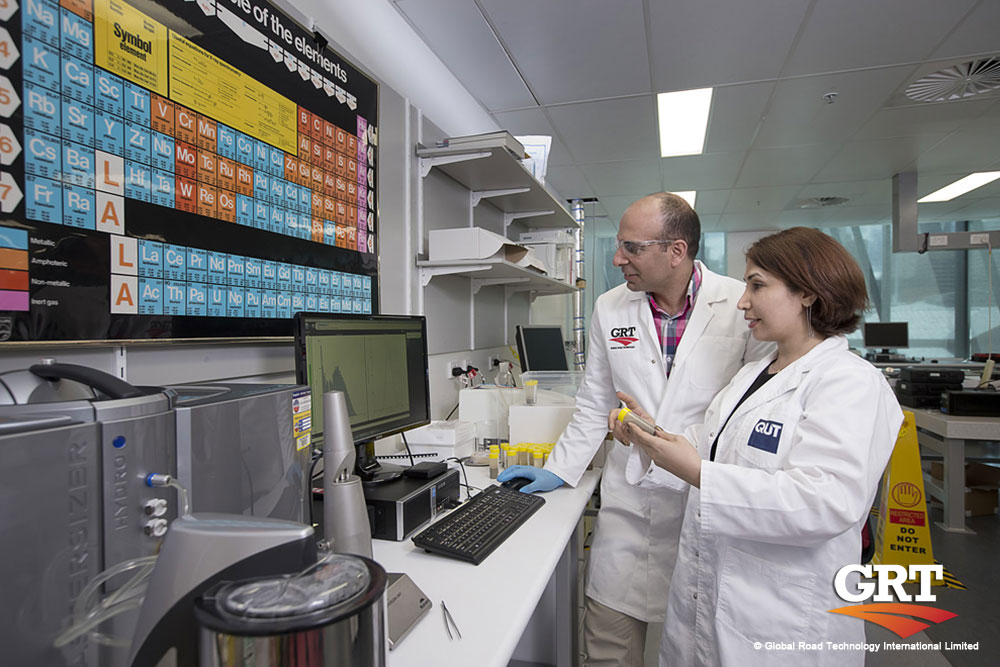Efficacy of bitumen engineering properties depends on the age state and unique fingerprint of bitumen inherent to the source of parent crude oil. Chemical changes and evolution of bitumen fractions determine its functional ability when used as binder in pavements. The advent of bitumen modification led to improvement in bitumen resistance to changes associated the process of aging via temperature and ultraviolet (UV) radiation. The article seeks to highlight bitumen aging and its mechanisms, the effect of temperature and UV in oxidative processes and the participation of bitumen modifiers in the process of bitumen aging. Whilst we do acknowledge the process of aging as very complex owing to the saturate, aromatics, resins and asphaltene fractions in bitumen, understanding the effects of temperature and UV enables better choice of modifiers that can improve the aging resistance of bitumen.
The bitumen aging cycle
The bitumen aging cycle consists of a series of steps related to asphalt plant transportation, asphalt production, storage, transportation to site and the actual placing of the asphalt mixture. These are the primary exposure routes for aging of bitumen as a result of high temperatures. The cycle continues to occur on the road as UV from sunlight and temperature variations result in secondary exposure contributions to aging of bitumen. In the laboratory the primary route is simulated using a rolling thin film oven test for short term aging whereas the secondary route is simulated through the pressure aging vessel test for long term aging. The focus is to have an idea of changes that occur to binders as a result of oxidation with binder conditioning assumed to mimic what happens in the field although they are limitations to exact replication of field conditions. It would be a disservice to the argument if focus was directed towards these particular tests only without including UV exposure as it contributes vastly to chemical changes that occur to bitumen in the field.
It is envisaged that the main aging mechanism is irreversible owing to chemical changes of bitumen and attributed to oxidation, loss of volatile components and migration of bitumen fractions into the aggregate. Maltene volatilization disturbs colloidal stability of bitumen and increases micellization and flocculation of asphaltenes. Resin and resinous oil molecules align and follow the structure of asphaltenes but as bitumen aging progresses resins disappear leading to increased asphaltene nano-aggregation. This marked increase in the asphaltene content leads to rise in viscosity and eventual increase in average molecular mass. The other purported mechanism is thermo-reversible and occurring below room temperature through production of time-dependent isothermal changes in bitumen rheology. Physical hardening is characterized by molecular structuring due to reorganization of bitumen microstructures.

Are environmental regulations, health and safety concerns or potential profit loss a concern right now?
The progression of the bitumen aging life cycle involves a combination of both thermooxidation and photooxidation. Photo-thermal aging studies have revealed that heat and UV play a coupled role in accelerating bitumen aging as opposed to single factor aging. Higher temperatures and UV intensity have a more distinct effect that leads to an increased aging reaction rate. The major contributors to bitumen aging are oxygen, temperature and UV. Bitumen oxidation is complex, and the extent of oxidative changes is based on the bitumen microstructure. Thermal contributions to oxidation result in thermooxidation whereas UV contributions lead to photooxidation. The functional groups in the bitumen chemical fractions undergo changes depending on the active sites available for the process of oxidation. Oxidation of methylene and degradation of unsaturated chains and naphthenic rings of benzene systems lead to ketones and carboxylic acids with the oxidation of thio-ethers leading to sulfoxides. Aromatization and chain scission may occur during oxidative aging. The resultant products of oxidation generally increase the polarity of bitumen. As the chemistry of aging is vast, other processes such as dehydrogenation of naphthenic rings and aromatization of their structures result in increased molecular weight as a result of the condensed aromatic rings. The dominant functional groups from bitumen oxidation are ketones and sulfoxides.
Polymer Modification
In general, polymer-chain scission compromises the integrity of the polymer backbone in aging of polymer modified bitumen (PMB). The process is dependent on the interaction between oxidative processes and loss of the polymer structure which reduces as bitumen ages. Elastomeric modifiers such as styrene butadiene styrene (SBS) are commonly used to modify the engineering properties of bitumen. The effect of UV on SBS modified bitumen is predominantly evident in production of carbonyl functional groups, the disappearance of the trans-trans butadiene carbon double bond of SBS and a marked increase in binder hardening. SBS modified bitumen resistance to thermal and UV induced aging is binder film thickness dependent. Consequently, upper layers in the road tend to experience more aging which over time permeates within the bitumen leading to further loss of its binding properties to the aggregate. With plastomers such as ethylene vinyl acetate (EVA), incompatibility between EVA chains and oxidized bitumen affects homogeneity of the binder which renders EVA unstable under bitumen aging. Crumb rubber modified bitumen exhibits improved aging resistance owing to the antioxidant properties of carbon black, which is present as an additive from the formulation of tyres.
All things must pass…

Every stage of the supply chain from crude oil feedstock to delivery on site in conjunction with in-service life of the road is important in the evaluation of bitumen age state. Mechanisms of aging are very much time and temperature dependent with secondary exposure mainly UV driven although these processes do not happen in isolation when it comes to the actual field aging. In order to correlate laboratory conditioning to field aging binder film thickness needs to be factored into the procedures of testing. Modification has different contributions to the aging process of bitumen which entirely depends on the modifier moiety chemistry and how the bitumen-modifier reaction affects the extent to which bitumen aging species are produced. Overall, the effect of aging due to loss of bitumen binding properties can lead to susceptibility to various other distresses such as moisture ingress, which accelerates the deterioration of the pavement.
Your feedback is important to us. If you enjoyed reading this Global Road Technology industry update and found it informative, please let us know by leaving a REVIEW.
REFERENCES
Baglieri, O., Dalmazzo, D., Barazia, M., Tabatabaee, H.A., and Bahia, H.U. 2012. Influence of Physical Hardening on the Low-Temperature Properties of Bitumen and Asphalt Mixtures. Procedia-Soc. Behav. Sci. 53. 504-513.
Iwanski, M., and Mazurek, G. 2013. Hydrated lime as the Anti-aging Bitumen Agent. Procedia Eng. 57. 424-432.
Lemarchand, C.A., Schroder, T.B., Dyre, J.C., and Hansen, J.S. Cooee bitumen: Chemical aging. J. Chem. Phys. 139.
Lu, X., and Isacsson, U. 2002. Effect of aging on bitumen chemistry and rheology. Constr. Build. Mater. 16:1. 15-22.
Mouillet, V., Farcas, F., Chailleux, E., and Sauger, L. 2014. Evolution of bituminous mix behavior submitted to UV rays in the laboratory compared to field exposure. Materials and Structures. 47:8. 1287-1299.
Rebelo, L.M., De Sousa, J.S., Abreu, A.S., Baroni, M.A., Alencar, A.E.V., Soares, S.A., Filho, J.M., and Soares, J.B. 2013. Aging of asphaltic binders investigated with atomic force microscopty.
Wang, H., Feng, Z., Zhou, B., and Yu, J. 2012. A study on Photo-thermal Coupled Aging Kinetics of Bitumen. Journal of Testing and Evaluation. 724-727.
Troy Adams
Troy Adams is the Managing Director of Global Road Technology (GRT) Specialising in Engineered Solutions for Dust Suppression, Erosion Control, Soil Stabilisation and Water Management. A pioneering, socially conscious Australian entrepreneur, Troy Adams is passionate about health and safety and providing innovative solutions that are cost-effective to the mining industry, governments and infrastructure sectors. Troy is also a tech investor, director of companies like Crossware, Boost, Hakkasan, Novikov and more.

